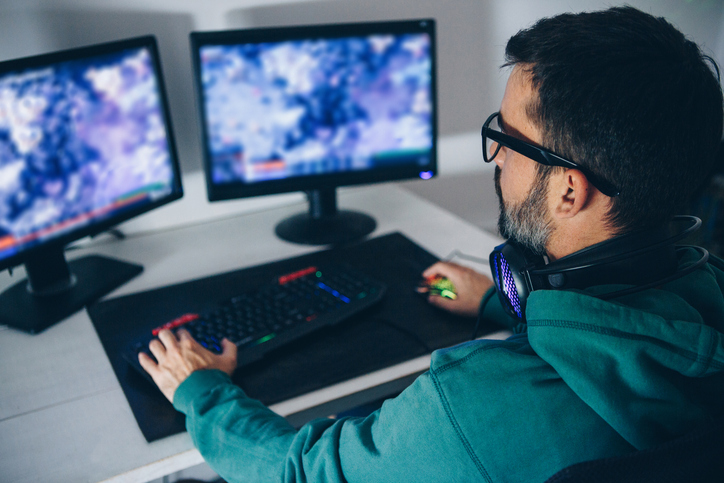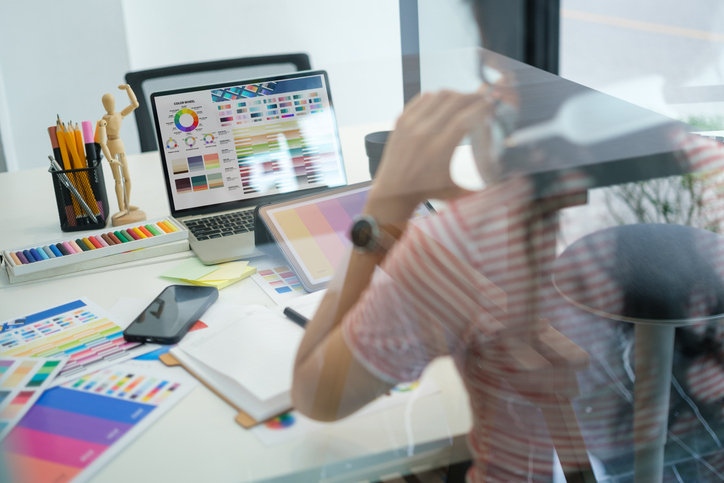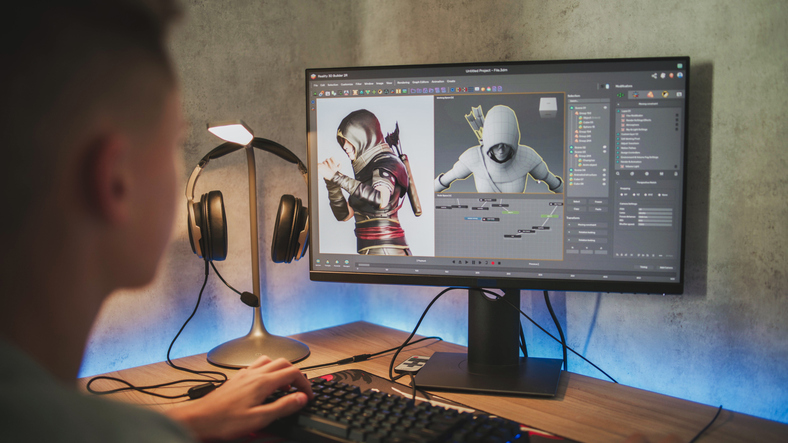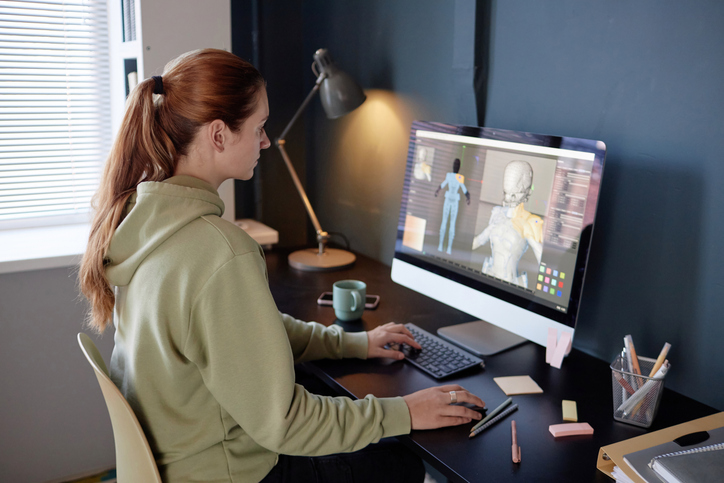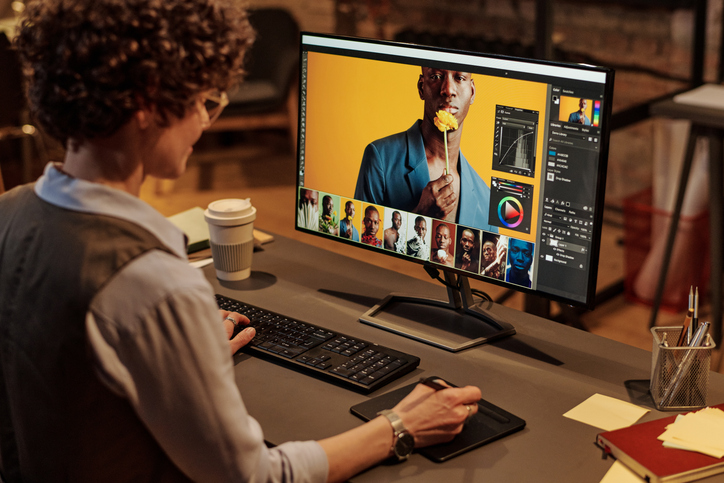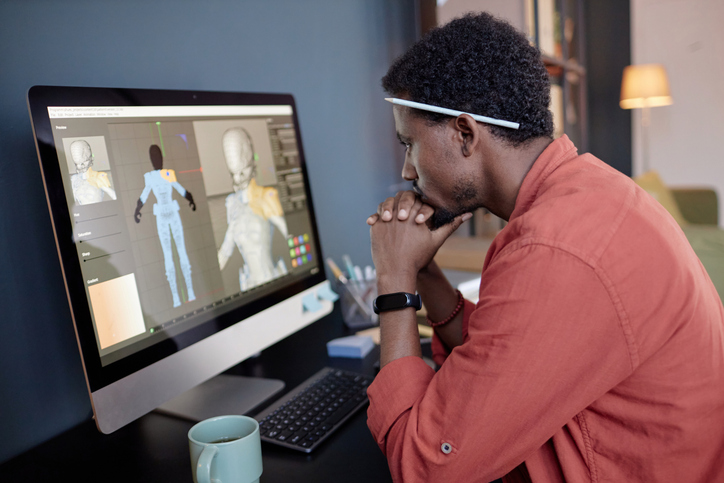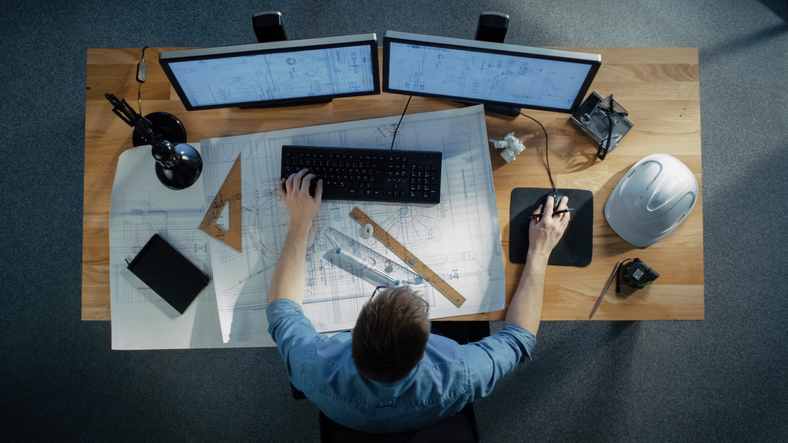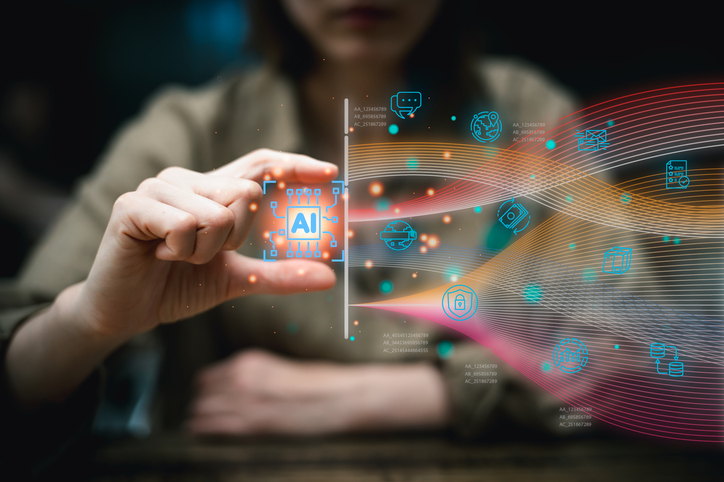Artificial intelligence (AI) has begun to revolutionize every aspect of our lives and graphic design is not an exception. From streamlining tedious tasks to offering innovative creative solutions, AI is transforming how designers work. But as AI becomes more sophisticated, many wonder: Will AI replace graphic designers? The short answer is no. Instead, AI in graphic design is set to empower artists, enhancing creativity, and unlocking new opportunities for innovation.
At the Visual College of Art and Design (VCAD) the Graphic Design Diploma program is designed to prepare future professionals for this evolving landscape. This article will explore how AI is reshaping graphic design, highlight its benefits and drawbacks, discuss the essential skills for modern designers, and explain why VCAD is the perfect place to future-proof your creative career.
How AI Is Reshaping the Graphic Design Landscape
AI is already transforming the creative landscape across various industries, with graphic design being one of the most impacted fields. Advanced algorithms and machine learning models are now integrated into a wide range of design tools, streamlining workflows, accelerating processes, and allowing creatives to focus on more imaginative aspects of their work. These technologies simplify and speed up repetitive tasks, enabling designers to execute complex edits in seconds tasks that once took hours to complete.
AI-Powered Tools Revolutionizing Design
Popular tools like Adobe Photoshop, Illustrator, and Canva now offer AI-powered features such as Auto Selection, Content-Aware Fill, and Generative Fill, empowering designers to perform intricate edits and enhancements quickly and efficiently. Beyond image editing, AI is expanding creative potential by enabling real-time adjustments, automatic background removal, and intuitive suggestions for design improvements.
Generative AI Unlocks Creative Potential
Generative AI platforms like Adobe Firefly, Midjourney, and DALL·E allow creatives to produce unique images, textures, and visual concepts by inputting plain text prompts. This technology encourages designers to push the boundaries of their creativity, explore modern design concepts, and experiment with different ideas without technical limitations slowing them down.
Transforming UX/UI Design with Hyper-Personalization
In addition, AI is revolutionizing UX/UI design by facilitating hyper-personalization. These advanced systems enable the creation of dynamic interfaces that adapt to user behaviour, preferences, and needs, resulting in more intuitive and engaging digital experiences. AI-powered tools offer the ability to automate design variations, optimize layouts for user engagement, and provide real-time feedback to enhance user interaction.
AI as a Creative Assistant, not a Replacement
Far from replacing human creativity, AI serves as an innovative co-creator an assistant that enhances the design process by handling repetitive tasks, suggesting creative variations, and freeing up time for human designers to focus on the conceptual and artistic elements of their work. As AI continues to evolve, its integration into graphic design will unlock new opportunities for creativity, innovation, and personalized user experiences.
The Benefits of AI for Modern Graphic Designers
AI in graphic design offers numerous advantages that can elevate a designer's workflow and creative output. Here are some of the key benefits:
1. Increased Efficiency
AI-driven tools can automate repetitive tasks, such as background removal, resizing images, and adjusting colour schemes. This allows designers to focus more on the creative aspects of their projects while reducing time spent on tedious manual tasks.
2. Limitless Creative Exploration
Generative AI encourages experimentation by quickly generating innovative design ideas, colour palettes, and mock-ups. Designers can use AI to brainstorm concepts and refine their vision without starting from nothing.
3. Enhanced Accessibility
AI helps improve accessibility by automatically checking for issues related to colour contrast, readability, and visual clarity. This ensures that designs are inclusive and adhere to accessibility standards.
4. Data-Driven Insights
AI can analyze audience engagement and user behaviour to provide actionable design recommendations. This enables designers to create visuals that resonate more effectively with their target audience.
5. Cost-Effective Solutions
For small businesses or individuals who need plain design elements, AI tools can provide affordable alternatives to hiring professional designers for basic tasks like logo creation or social media graphics.
The Drawbacks of AI for Modern Graphic Designers
Despite its many advantages, AI in graphic design also comes with certain challenges and limitations:
1. Lack of Emotional Depth
AI-generated designs often lack the emotional connection and cultural sensitivity that human designers bring to their work. AI cannot replicate the nuanced understanding of human experiences and storytelling.
2. Ethical Concerns
Many AI models are trained on vast datasets that may include copyrighted works without permission from the original creators. This raises important ethical questions about intellectual property rights and originality.
3. Generic Outputs
While AI tools can generate impressive visuals, the results can sometimes feel generic or uninspired. Human designers excel at creating personalized, emotionally resonant content that AI cannot replicate.
4. Dependence on Technology
Over-reliance on AI tools could hinder the development of traditional design skills and creativity. It is essential for designers to continue honing their craftsmanship and artistic instincts.

Skills Future Graphic Designers Need to Stay Ahead
As AI continues to evolve, future graphic designers must adapt by developing a versatile skill set that integrates both technical and creative abilities. Here are some essential skills modern designers should focus on:
1. Mastering Industry-Standard Tools
Proficiency in tools like Adobe Photoshop, Illustrator, InDesign, Premiere Pro, and After Effects is essential. VCAD’s Graphic Design Diploma program ensures students gain hands-on experience with these industry-standard platforms.
2. Creative Problem-Solving
While AI can assist with technical tasks, human intuition and creativity remain irreplaceable. Developing strong conceptual thinking and innovative problem-solving skills will help designers create unique, meaningful work.
3. Digital Literacy
Understanding how AI works, including its capabilities and limitations, is crucial. Familiarity with AI-enhanced design tools and staying up to date with emerging technologies can provide a competitive edge.
4. Visual Communication
Strong skills in typography, colour theory, and layout design are foundational for effective visual storytelling. VCAD’s Graphic Design Diploma program emphasizes these core design principles to help students excel.
5. Emotional Intelligence
Empathy, collaboration, and communication skills are essential when working with clients and creative teams. These human elements are critical for understanding audience needs and creating impactful designs.
Reasons Why AI Cannot Replace Human Creativity
The Limits of AI’s Creative Capabilities
Despite AI’s impressive capabilities, it lacks the human ability to think creatively, emotionally, and contextually. AI does not understand cultural significance, emotional nuance, or personal storytelling elements that are vital to creating meaningful, impactful designs. While AI can analyze data patterns and generate visuals, it cannot replicate the depth of human experience or insight required for authentic artistic expression.
The Power of Human Intuition and Emotion
Human creativity is fueled by individual experiences, intuition, and emotional connections qualities that AI simply cannot mimic. True artistic innovation stems from a designer’s unique perspective, feelings, and cultural understanding. While AI tools can aid in the creative process by offering inspiration or automating tasks, they lack the capability to produce original thought, intuitive design choices, or genuine innovation.
AI as a Collaborative Tool, not a Replacement
Designers who embrace AI as a supportive tool, rather than fearing it as a competitor, will find themselves better equipped to push creative boundaries. By allowing AI to handle repetitive tasks such as resizing images, adjusting layouts, or generating design variations artists can focus on high-level creative work. This collaboration frees up time for designers to concentrate on strategy, storytelling, and imaginative exploration, strengthening the artistic process instead of replacing it.
Why VCAD Is the Perfect Place to Future-Proof Your Design Career
At VCAD, we understand that the future of graphic design is intertwined with technology and creativity. Our Graphic Design Diploma program equips students with the tools and knowledge needed to navigate this evolving industry confidently.
1. Industry-Standard Software Training
Students gain hands-on experience using tools like Adobe Photoshop, Illustrator, InDesign, After Effects, and Premiere Pro. This ensures they graduate with the practical skills required by the industry.
2. Creative and Technical Skill Development
The program emphasizes both the artistic and technical sides of design, including drawing, typography, digital photography, packaging design, corporate branding, and advertising design.
3. Personalized Learning Experience
VCAD offers flexible online and on-campus learning options, allowing students to tailor their educational experience to fit their lifestyles. You can also study Graphic Design at Vancouver campus or study Graphic Design at Calgary campus.
4. Professional Portfolio Creation
By the end of the program, students will have built a professional portfolio displaying their unique style, creativity, and technical expertise as an essential asset for securing employment in the design industry.
5. Mentorship from Industry Professionals
Learn from experienced industry professionals who provide practical insights, mentorship, and networking opportunities, helping you gain real-world knowledge and connections.
Career Opportunities in a Tech-Enhanced Creative Landscape
AI is not replacing jobs; it is transforming them. The future of graphic design will offer a range of exciting career opportunities for those who embrace technology and continue developing their creative skills. Graduates of VCAD’s Graphic Design program will be well-prepared for roles such as:
- Graphic Designer
- Illustrator
- Web Designer
- Layout Designer
- Page Designer
- Ad Designer
- Medical or Scientific Illustrator
- Graphic Artist
As technology continues to advance, new roles like AI-Assisted UX/UI Designer and Digital Content Specialist will also emerge, offering even more avenues for creative professionals.
Final Thoughts
AI in graphic design is here to stay but instead of replacing human creativity, it enhances and complements it. By automating tedious tasks, generating innovative ideas, and making the design process more efficient, AI allows designers to focus on what truly matters: creativity, innovation, and human connection.
If you are ready to future-proof your career and explore the exciting intersection of technology and creativity, VCAD’s Graphic Design Diploma program is the perfect place to start. Immerse yourself in a dynamic learning environment, gain industry-relevant skills, and prepare for a successful future in the ever-evolving world of graphic design.
Take the first step toward your creative career today apply now and embrace the future of design with VCAD!
